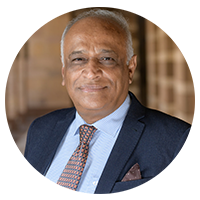
| Technical Program Committee Chairs |

Prof. Nikolaos Nikitas
University of Leeds, UK
Biography:
Nikolaos Nikitas is a Professor in Structural Dynamics and Engineering in the School of Civil Engineering working particularly on aeroelasticity and on complex, multibody dynamic interaction problems. He previously researched on theoretically probing the intricate size-effects of nano/micro-plasticity (EU FP6, RTN 'Size-Depen') while conducting a first PhD in the University of Edinburgh. Both continuum and discrete descriptions were used for a study that covered not only the “on average” size-effects that have lately become much appreciated in engineering practice, but also spatio-temporal avalanche-like features of material deformation. Later he undertook an EPSRC funded second PhD (EP/D073944/1) in the University of Bristol, dealing with self-excited vibrations of flexible wind-prone bridges, which further led to a JSPS Fellowship with the University of Kyoto (ID No. PE 10565).
He is an expert on theoretical and experimental dynamics with work including full-scale monitoring and inverse analysis of landmark/major bridges (Clifton Suspension Bridge, Ting Kau Bridge, Oresund Bridge), wind tunnel testing in state-of-the-art unique facilities (National Research Council, Canada), shaking table tests (Bristol Laboratory) and physical modelling for novel structural systems (e.g. offshore wind turbines). Before moving to Leeds he joined the Department of Civil Engineering of the University of Bristol as a lecturer in Structures (08/2011-07/2012). More recently he had the leading role, being the Structural Wind and Seismic Dynamics expert in Leeds, contributing to the successful EPSRC Strategic Equipment Grant proposal for establishing a dynamic testing facility in Leeds (EP/L022648). Under the same capacity, he is the one responsible for the full-scale infrastructure monitoring equipment acquired through UKCRIC (EP/P017169/1) as part of the newly established National Centre for Infrastructure Materials (CIM).

Prof. Maki Habib
American University in Cairo, Egypt
Biography:
Maki Habib obtained his Doctor of Engineering Sciences (DES) in Intelligent and Autonomous Robotics from the University of Tsukuba in 1990, Japan. He was a selected research scientist at RIKEN, Japan, and senior researcher at RISO-Laboratories, Japan, and visiting researcher at EPFL, Switzerland. He was a visiting expert under Asian Development Bank (ADB), Associate Professor at UTM, Malaysia, and a Senior Manager at MCRIA for engineering projects and industrial consultation, Malaysia. He was a leading senior research scientist with GMD-Japan, Japan leading Telecooperation research group. Associate Professor with Monash University (Australia/Malaysia), he developed and led the Mechatronics Engineering program. He was appointed as a full Professor of Robotics and Mechatronics at Swinburne University (Australia/Malaysia). Then, he was an invited Professor at KAIST, South Korea, Residing Professor at Saga University, Japan, and since Sept. 2007 he is a full Professor of Robotics and Mechatronics at AUC. Habib was a visiting professor (short term) at many Universities around the world, such as, Nagasaki University-Japan, Hokkoido University-Japan, Orebro University – Sweden, Norwegian University of Science and Technology – Norway, etc. Habib served as a consultant and Technical advisor to well-known international companies including Toyota group and ABB.
Habib is Editor-in-Chief of the International Journal of Artificial Intelligence and Machine Learning, Regional Editor and Associate Editor of 10 International Journals, and Editorial Board member of another 10 International Journals beside his leadership as a member of international organizing/program committee of more than 20 International Conference every year.
Habib edited more than 14 books, published more than 26 book chapters and also more than 275 papers at international journals and international conferences.